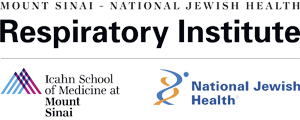COPD Treatments
Because there is no cure for COPD, treatments are focused on managing symptoms and improving each person’s quality of life. The COPD Program provides an individualized treatment plan for each patient. Treatment options may include one or more of the following
- Smoking cessation: Quitting smoking slows the progression of COPD, improves survival, reduces the chance of other smoking related illness such as cancers and heart disease, and is the most important part of COPD management. There are many programs to help patients quit smoking, such as behavior change programs and medications.
- Environmental management: Limiting the number of irritants in the air you breathe will reduce COPD exacerbations, and may slow the progression of COPD and help to make breathing easier. Avoid smoke, dust, smog, extreme heat or cold, and high altitude.
- Vaccines: Because the flu and pneumonia can make COPD symptoms worse and cause COPD exacerbations, all individuals should get vaccinated against pneumococcal pneumonia and influenza. The flu vaccine is administered every year. Patients should also be vaccinated against whooping cough.
- Medications: Medication taken on a long-term daily basis for COPD reduces shortness of breath by opening the airways and decreasing airway inflammation. These medications are most often inhaled but some are taken as a pill. COPD exacerbations are treated with steroids (orally or systemically), and/or antibiotics.
- Comprehensive pulmonary rehabilitation: A program of exercise, education, dietary counseling, and support can improve health of people with COPD, reduce shortness of breath, improve quality of life, and enhance healthy behaviors.
- Exercise: Regular life-long physical activity, in accordance with your physician’s recommendations, can reduce shortness of breath with activity.
- Oxygen: If the oxygen level in the blood is too low, oxygen therapy may be prescribed to increase survival and reduce shortness of breath. Oxygen may be ordered for full-time use, or only for specific activities or sleep.
- Breathing and coughing techniques: Special methods of breathing can help bring more air into the lungs and reduce air trapped in the lungs and reduce shortness of breath. Effective coughing techniques and special devices can help clear mucus from your lungs. Ask your doctor if these techniques—such as pursed lip breathing and controlled coughing—can help you.
- Nutrition: An adequate and appropriate diet and optimal body weight are important for patients with COPD. Adopt a healthy diet low in saturated fat and rich in fruits, vegetables, and whole grains. Maintaining a normal weight is helpful because excess weight causes the lungs and heart to work harder. If it is difficult to eat because you feel full, try eating several smaller meals throughout the day instead of a few large meals. Slowing the pace of eating will also make it easier to breathe.
- Lifestyle Changes: Changes such as pacing activities (planning to space difficult activities throughout the day) and going slower, as well as learning relaxation and other stress management techniques can be helpful. Seeking emotional support from professionals, family, and friends may also help because anxiety can increase breathing rate.
- Surgery: A small number of people may benefit from surgery, such as a procedure to remove the most emphysematous parts of the lung (lung volume reduction surgery) or a lung transplant.
